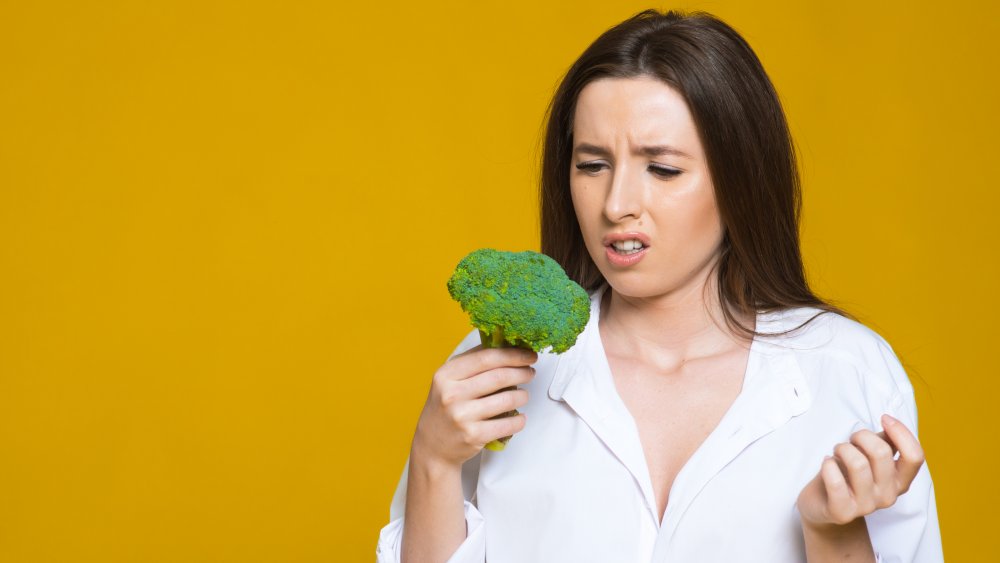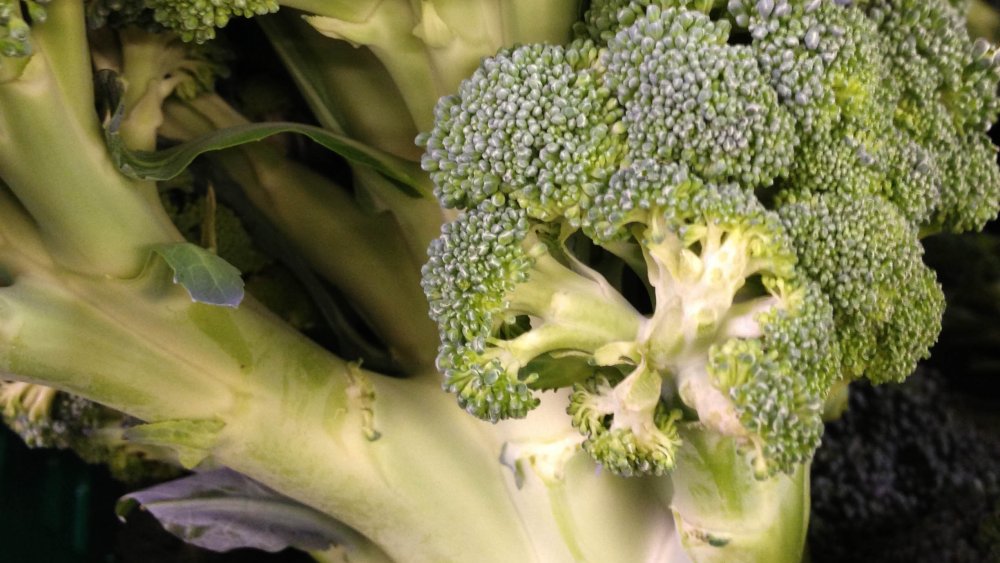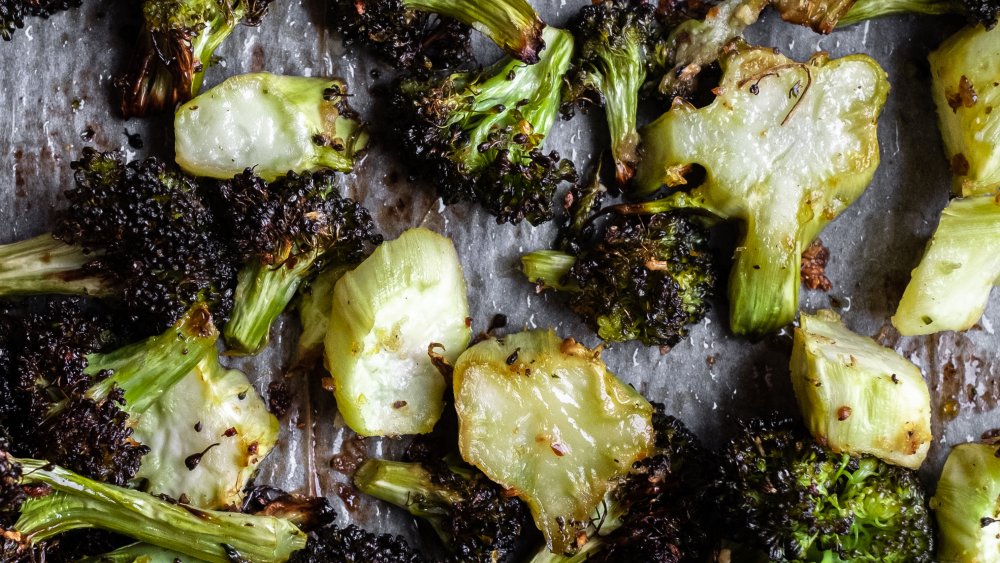You've Been Eating Broccoli Wrong This Whole Time
You know that feeling of wholesome, connected-to-the-earth confidence you feel when you're loading your diet with vegetables? It almost makes you forget every slice of pizza and chocolate cake you ever had and makes you want to post each vibrant, plant-based plate on Instagram to share your clean-eating ambitions with the world. Except, you might not be getting the most out of one particular vitamin-packed green if you're not eating it right.
If you throw away your broccoli stems instead of eating them, you've been eating broccoli wrong this whole time. The stems are completely edible and they're surprisingly good for you! Working the stems into your cooking isn't difficult and just imagine the satisfaction you'll get from using every part of your broccoli with almost no waste. Getting to be healthy and resourceful – that's a win-win.
Broccoli stems are just as nutritious as the florets
Just a disclaimer before we get into the details: prepare to feel a little guilty for not having given broccoli the appreciation it deserves all this time. According to Healthline, one cup of broccoli has 2.5 grams of protein, 2.4 grams of gut-friendly fiber, and only 31 calories. A 1/2 cup serving provides nearly 70 percent of the daily recommended value of Vitamin C, which supports immune function and skin health.
Broccoli also contains folate, which encourages normal tissue growth and cell function, and iron that helps carry oxygen throughout your body. Overall, cruciferous vegetables like broccoli are linked to a reduced risk of many cancers and may help lower cholesterol. The really cool part, though, is that broccoli stems contain equal amounts of the nutrients found in the florets, plus even more calcium, iron, and vitamin C (via NDTV Food). And to think, you've been tossing them in the compost this whole time!
Preparing broccoli stems is simple
If you're new to cooking and eating broccoli stems, don't worry – there's nothing difficult about it. Bon Appetit says the first step is to chop off the bottom one to two inches of the stem and discard it since it tends to be tough and woody. From there, whether or not you peel the firm outer layer of skin off the stems depends on how you'll be cooking them. If the stems will be cooked for a long time, like roasting in the oven, for example, leave the skin on because it will soften enough to still be tasty. If you're opting for a quick-cooking method like a stir-fry or frittata, peel the outer layer of skin off the stalk first.
Broccoli stems can be sliced and used in many of the same dishes you'd normally throw the florets into, like soups and stews, rice, stocks, salads, or even just roasted on their own. Eating Bird Food suggests using a spiralizer to transform your broccoli stalks into noodles and adding them to a stir-fry with shrimp, peppers, ginger, and teriyaki sauce. Chef Alex Guarnaschelli even turns broccoli stems that have been cooked down with onions and garlic into a vinaigrette with dijon mustard and red wine vinegar (via Food & Wine). With options like these, and the extra nutritional boost, you'll never want to discard your broccoli stems again.


